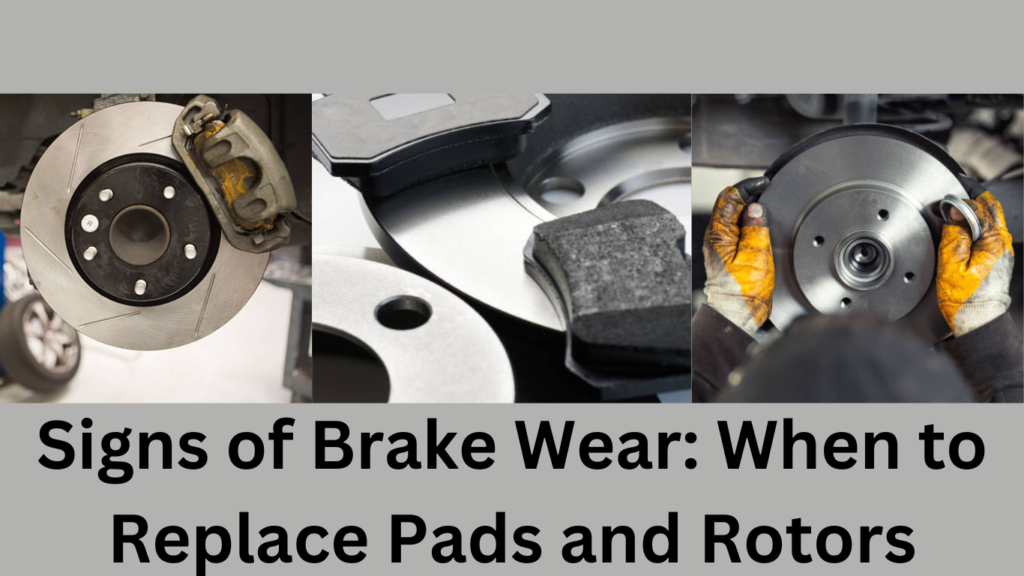Introduction
For the modern car enthusiast, understanding the inner workings of a vehicle goes hand in hand with the love for all things automotive. Among the many technological marvels that grace our four-wheeled companions, Anti-Lock Braking Systems (ABS) stand out as a crucial advancement in automotive safety and performance. In this article, we’ll delve deep into the science behind ABS, unraveling the mysteries of how this technology works and why it’s a game-changer for drivers.
A Brief History of ABS
Before we get into the nitty-gritty of how ABS works, let’s take a step back in time and explore its origins. Anti-lock Braking Systems were first developed in the 1950s and were initially used in aircraft. It wasn’t until the 1970s that they made their way into automobiles. The primary goal of ABS was to prevent wheel lockup during braking, reducing the risk of skidding and helping drivers maintain control of their vehicles.
The Basics of Braking
To understand how ABS works, we need to start with the fundamentals of braking. When you press your car’s brake pedal, a series of events are set into motion:
- Brake Pedal Actuation: As you press the brake pedal, hydraulic pressure is generated in the brake fluid.
- Brake Caliper Squeeze: This hydraulic pressure is transmitted to the brake calipers, which contain pistons. These pistons press the brake pads against the brake rotors, creating friction.
- Friction Generates Heat: The contact between the brake pads and rotors generates heat. This heat dissipates through the rotors and the surrounding air.
- Kinetic Energy Conversion: The kinetic energy of your moving vehicle is converted into thermal energy (heat) due to this friction. This conversion slows the vehicle down.
The Problem with Traditional Brakes
Traditional braking systems rely solely on the pressure applied to the brake pedal. When you slam on the brakes in an emergency situation, especially on slippery or uneven surfaces, a significant amount of pressure can cause the wheels to lock up. This lockup can result in a loss of steering control, as well as extended stopping distances.
The ABS Solution
Anti-Lock Braking Systems are designed to counteract the issues associated with wheel lockup during braking. Here’s how they do it:
Sensors
At the heart of ABS are sensors strategically placed on each wheel. These sensors constantly monitor the speed of the wheels. If a wheel is about to lock up, the sensor detects a sudden deceleration.
Control Unit
The sensor data is sent to a control unit, which is essentially the brain of the ABS system. This control unit processes the information in real-time and makes rapid decisions based on the data it receives.
Modulators
Once the control unit determines that a wheel is on the verge of locking up, it intervenes by modulating the brake pressure to that specific wheel. This modulation is achieved through a series of valves or solenoids that adjust the hydraulic pressure.
How ABS Prevents Lockup
When the ABS system detects an impending wheel lockup, it employs one or more of the following techniques to prevent it:
1) Rapid Pulse-Braking
ABS rapidly pulses the brake pressure to the affected wheel(s). This pulsing action prevents the wheel from completely locking up. Instead, it allows the wheel to momentarily regain traction between pulses, enabling the driver to maintain steering control.
2) Left-Right Split
ABS can also distribute brake pressure unequally between the left and right wheels to prevent lockup. For instance, if the left front wheel is about to lock up, ABS reduces the brake pressure on that wheel while maintaining or increasing it on the right front wheel.
3) Front-Rear Split
In addition to left-right control, ABS can also adjust brake pressure between the front and rear wheels. This helps to balance the car and prevent it from skidding or fishtailing during hard braking.
The Benefits of ABS
Anti-Lock Braking Systems offer numerous advantages to drivers, making them an essential component of modern vehicles:
Improved Control
ABS prevents wheel lockup, allowing drivers to maintain control of their vehicles during emergency braking or slippery conditions.
Shorter Stopping Distances
By preventing wheel lockup, ABS reduces stopping distances. This can be a lifesaver in critical situations.
Enhanced Steering Capability
With ABS in action, you can continue to steer your vehicle even under heavy braking, which is crucial for avoiding obstacles.
Traction on Slippery Surfaces
ABS is especially effective on wet, icy, or gravel-covered roads, where maintaining wheel traction is challenging.
Limitations of ABS
While ABS is undoubtedly a groundbreaking safety feature, it’s essential to be aware of its limitations:
Loss of Pedal Feel
Some drivers may notice a slight pulsing sensation in the brake pedal when ABS activates. This is normal and indicates that the system is working.
No Guarantees on Ice
ABS can’t perform miracles on ice. Even with ABS, you should exercise caution and adapt your driving to the road conditions.
Tire Quality Matters
The effectiveness of ABS is closely tied to the quality of your tires. Worn or inadequate tires may limit the system’s ability to prevent wheel lockup.
The Future of ABS
As automotive technology continues to advance, so does ABS. The future of this system holds exciting developments, such as the integration of ABS with other safety features like electronic stability control and autonomous driving systems. These innovations promise even greater safety and control for drivers.
Conclusion
In the world of automotive engineering, few innovations have had as significant an impact on safety and performance as Anti-Lock Braking Systems. By preventing wheel lockup during hard braking, ABS empowers drivers to maintain control of their vehicles in critical situations, reduces stopping distances, and enhances overall safety on the road. As car enthusiasts, understanding the science behind ABS not only deepens our appreciation for the technology but also underscores the importance of having it in our vehicles. So, the next time you hit the brakes and feel that slight pulsing in the pedal, remember that it’s your car’s way of keeping you safe and in control.



